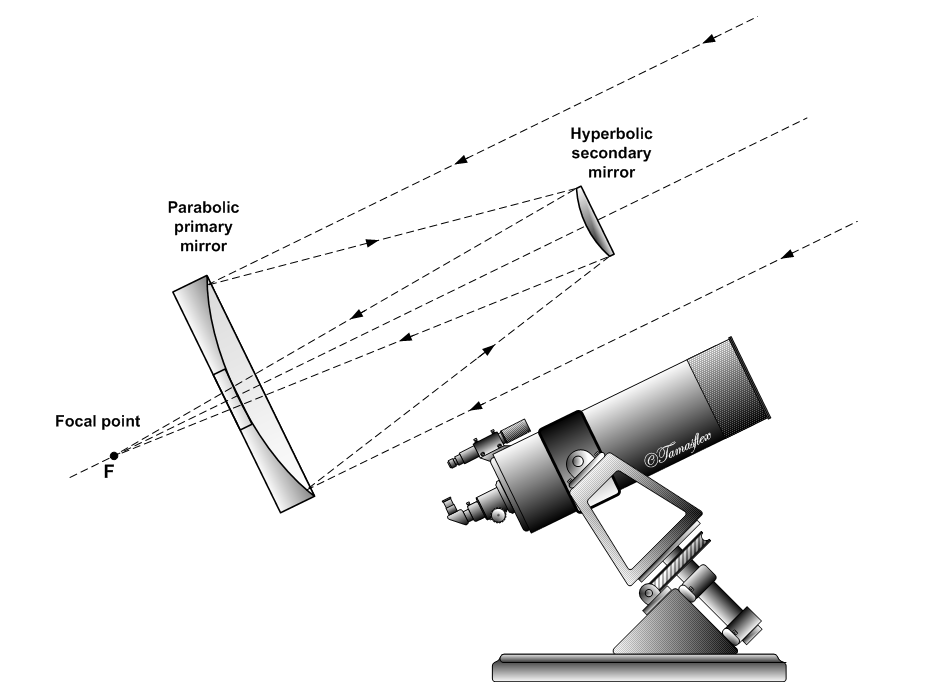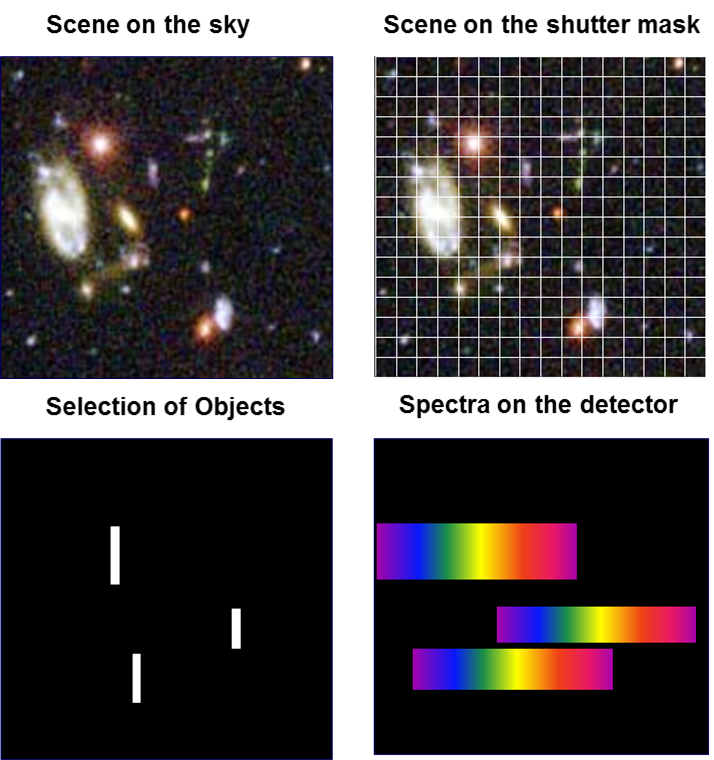|
Very Large Telescope
The Very Large Telescope (VLT) is an astronomical facility operated since 1998 by the European Southern Observatory, located on Cerro Paranal in the Atacama Desert of northern Chile. It consists of four individual telescopes, each equipped with a primary mirror that measures in diameter. These optical telescopes, named ''Antu'', ''Kueyen'', ''Melipal'', and ''Yepun'' (all words for astronomical objects in the Mapuche language), are generally used separately but can be combined to achieve a very high angular resolution. The VLT array is also complemented by four movable Auxiliary Telescopes (ATs) with apertures. The VLT is capable of observing both visible and infrared wavelengths. Each individual telescope can detect objects that are roughly four billion times fainter than what can be seen with the naked eye. When all the telescopes are combined, the facility can achieve an angular resolution of approximately 0.002 arcsecond. In single telescope mode, the angular resol ... [...More Info...] [...Related Items...] OR: [Wikipedia] [Google] [Baidu] |
Ultraviolet
Ultraviolet radiation, also known as simply UV, is electromagnetic radiation of wavelengths of 10–400 nanometers, shorter than that of visible light, but longer than X-rays. UV radiation is present in sunlight and constitutes about 10% of the total electromagnetic radiation output from the Sun. It is also produced by electric arcs, Cherenkov radiation, and specialized lights, such as mercury-vapor lamps, tanning lamps, and black lights. The photons of ultraviolet have greater energy than those of visible light, from about 3.1 to 12 electron volts, around the minimum energy required to ionize atoms. Although long-wavelength ultraviolet is not considered an ionizing radiation because its photons lack sufficient energy, it can induce chemical reactions and cause many substances to glow or fluoresce. Many practical applications, including chemical and biological effects, are derived from the way that UV radiation can interact with organic molecules. The ... [...More Info...] [...Related Items...] OR: [Wikipedia] [Google] [Baidu] |
GRB 090423
GRB 090423 was a gamma-ray burst (GRB) detected by the Swift Gamma-Ray Burst Mission on April 23, 2009, at 07:55:19 UTC whose afterglow was detected in the infrared and enabled astronomers to determine that its redshift is ''z'' = 8.2, making it one of the most distant objects detected at that time with a spectroscopic redshift ( GN-z11, discovered in 2016, has a redshift of 11). A gamma-ray burst is an extremely luminous event flash of gamma rays that occurs as the result of an explosion, and is thought to be associated with the formation of a black hole. The burst itself typically only lasts for a few seconds, but gamma-ray bursts frequently produce an "afterglow" at longer wavelengths that can be observed for many hours or even days after the burst. Measurements at these wavelengths, which include X-ray, ultraviolet, optical, infrared, and radio, enable follow-up study of the event. The finite speed of light means that GRB 090423 is also one of the earliest objects e ... [...More Info...] [...Related Items...] OR: [Wikipedia] [Google] [Baidu] |
Interferometry And The VLTI
Interferometry is a technique which uses the ''interference'' of superimposed waves to extract information. Interferometry typically uses electromagnetic waves and is an important investigative technique in the fields of astronomy, fiber optics, engineering metrology, optical metrology, oceanography, seismology, spectroscopy (and its applications to chemistry), quantum mechanics, nuclear and particle physics, plasma physics, biomolecular interactions, surface profiling, microfluidics, mechanical stress/strain measurement, velocimetry, optometry, and making holograms. Interferometers are devices that extract information from interference. They are widely used in science and industry for the measurement of microscopic displacements, refractive index changes and surface irregularities. In the case with most interferometers, light from a single source is split into two beams that travel in different optical paths, which are then combined again to produce interference; two incoh ... [...More Info...] [...Related Items...] OR: [Wikipedia] [Google] [Baidu] |
Betelgeuse
Betelgeuse is a red supergiant star in the constellation of Orion (constellation), Orion. It is usually the List of brightest stars, tenth-brightest star in the night sky and, after Rigel, the second brightest in its constellation. It is a distinctly reddish, semiregular variable star whose apparent magnitude, varying between +0.0 and +1.6, with a main period near 400 days, has the widest range displayed by any first-magnitude star. Betelgeuse is the brightest star in the night sky at near-infrared wavelengths. Its Bayer designation is , Latinisation of names, Latinised to Alpha Orionis and abbreviated Alpha Ori or . With a radius between 640 and 764 times that of the Sun, if it were at the center of the Solar System, its surface would lie beyond the asteroid belt and it would engulf the orbits of Mercury (planet), Mercury, Venus, Earth, and Mars. Calculations of Betelgeuse's mass range from slightly under ten to a little over twenty times that of the Sun. For ... [...More Info...] [...Related Items...] OR: [Wikipedia] [Google] [Baidu] |
The SPHERE Instrument Attached To The VLT
''The'' is a grammatical article in English, denoting nouns that are already or about to be mentioned, under discussion, implied or otherwise presumed familiar to listeners, readers, or speakers. It is the definite article in English. ''The'' is the most frequently used word in the English language; studies and analyses of texts have found it to account for seven percent of all printed English-language words. It is derived from gendered articles in Old English which combined in Middle English and now has a single form used with nouns of any gender. The word can be used with both singular and plural nouns, and with a noun that starts with any letter. This is different from many other languages, which have different forms of the definite article for different genders or numbers. Pronunciation In most dialects, "the" is pronounced as (with the voiced dental fricative followed by a schwa) when followed by a consonant sound, and as (homophone of the archaic pronoun ''thee' ... [...More Info...] [...Related Items...] OR: [Wikipedia] [Google] [Baidu] |
Cassegrain Focus
The Cassegrain reflector is a combination of a primary concave mirror and a secondary convex mirror, often used in optical telescopes and radio antennas, the main characteristic being that the optical path folds back onto itself, relative to the optical system's primary mirror entrance aperture. This design puts the focal point at a convenient location behind the primary mirror and the convex secondary adds a telephoto effect creating a much longer focal length in a mechanically short system. In a symmetrical Cassegrain both mirrors are aligned about the optical axis, and the primary mirror usually contains a hole in the center, thus permitting the light to reach an eyepiece, a camera, or an image sensor. Alternatively, as in many radio telescopes, the final focus may be in front of the primary. In an asymmetrical Cassegrain, the mirror(s) may be tilted to avoid obscuration of the primary or to avoid the need for a hole in the primary mirror (or both). The classic Cassegrain con ... [...More Info...] [...Related Items...] OR: [Wikipedia] [Google] [Baidu] |
Nasmyth Focus
The Nasmyth telescope, also called Nasmyth–Cassegrain or Cassegrain–Nasmyth, is a reflecting telescope developed by the Scottish inventor James Nasmyth in 1845. It is a modified form of a Cassegrain telescope, with light reflected sideways to an eyepiece. Scheme As in the Cassegrain telescope, the light falls on a concave primary mirror, then is reflected towards a convex secondary mirror. A comparatively small tertiary flat mirror reflects the light to one of the sides of the telescope. (The central hole in the primary mirror may still host a Cassegrain focus if the tertiary can be moved out of the way.) This flat mirror is placed on the altitude axis, so that the beam exits through a hole in the middle of the altitude bearing. This means the eyepiece or instrument does not need to move up and down with the telescope as the tertiary mirror's angle with the main telescope axis is adjustable as a function of the telescope's pointing and the star's elevation above the horizo ... [...More Info...] [...Related Items...] OR: [Wikipedia] [Google] [Baidu] |
Multi-Object Spectrometer
A multi-object spectrometer is a type of optical spectrometer capable of simultaneously acquiring the spectra of multiple separate objects in its field of view. It is used in astronomical spectroscopy and is related to long-slit spectroscopy. This technique became available in the 1980s. Description The term multi-object spectrograph is commonly used for spectrographs using a bundle of fibers to image part of the field. The entrance of the fibers is at the focal plane of the imaging instrument. The bundle is then reshaped; the individual fibers are aligned at the entrance slit of a spectrometer, dispersing the light on a detector. This technique is closely related to integral field spectrography (IFS), more specifically to fiber-IFS. It is a form of snapshot hyperspectral imaging, itself a part of imaging spectroscopy. Apertures Typically, the apertures of multi-object spectrographs can be modified to fit the needs of the given observation. For example, the MOSFIRE (Mul ... [...More Info...] [...Related Items...] OR: [Wikipedia] [Google] [Baidu] |
Infrared Astronomy
Infrared astronomy is a sub-discipline of astronomy which specializes in the astronomical observation, observation and analysis of astronomical objects using infrared (IR) radiation. The wavelength of infrared light ranges from 0.75 to 300 micrometers, and falls in between Visible light, visible radiation, which ranges from 380 to 750 nanometers, and terahertz radiation, submillimeter waves. Infrared astronomy began in the 1830s, a few decades after the discovery of infrared light by William Herschel in 1800. Early progress was limited, and it was not until the early 20th century that conclusive detections of astronomical objects other than the Sun and Moon were made in infrared light. After a number of discoveries were made in the 1950s and 1960s in radio astronomy, astronomers realized the information available outside the visible wavelength range, and modern infrared astronomy was established. Infrared and optical astronomy are often practiced using the same telescopes, as the ... [...More Info...] [...Related Items...] OR: [Wikipedia] [Google] [Baidu] |
Laser Guide Star
A laser guide star is an artificial star image created for use in astronomical adaptive optics systems, which are employed in large telescopes in order to correct atmospheric distortion of light (called '' astronomical seeing''). Adaptive optics (AO) systems require a wavefront reference source of light called a guide star. Natural stars can serve as point sources for this purpose, but sufficiently bright stars are not available in all parts of the sky, which greatly limits the usefulness of natural guide star adaptive optics. Instead, one can create an artificial guide star by shining a laser into the atmosphere. Light from the beam is reflected by components in the upper atmosphere back into the telescope. This star can be positioned anywhere the telescope desires to point, opening up much greater amounts of the sky to adaptive optics. Because the laser beam is deflected by astronomical seeing on the way up, the returning laser light does not move around in the sky as as ... [...More Info...] [...Related Items...] OR: [Wikipedia] [Google] [Baidu] |
Adaptive Optics
Adaptive optics (AO) is a technique of precisely deforming a mirror in order to compensate for light distortion. It is used in Astronomy, astronomical telescopes and laser communication systems to remove the effects of Astronomical seeing, atmospheric distortion, in microscopy, optical fabrication and in retinal imaging systems to reduce optical aberrations. Adaptive optics works by measuring the distortions in a wavefront and compensating for them with a device that corrects those errors such as a deformable mirror or a liquid crystal array. Adaptive optics should not be confused with active optics, which work on a longer timescale to correct the primary mirror geometry. Other methods can achieve resolving power exceeding the limit imposed by atmospheric distortion, such as speckle imaging, aperture synthesis, and lucky imaging, or by moving outside the atmosphere with space-based telescope, space telescopes, such as the Hubble Space Telescope. History Adaptive optics was ... [...More Info...] [...Related Items...] OR: [Wikipedia] [Google] [Baidu] |






